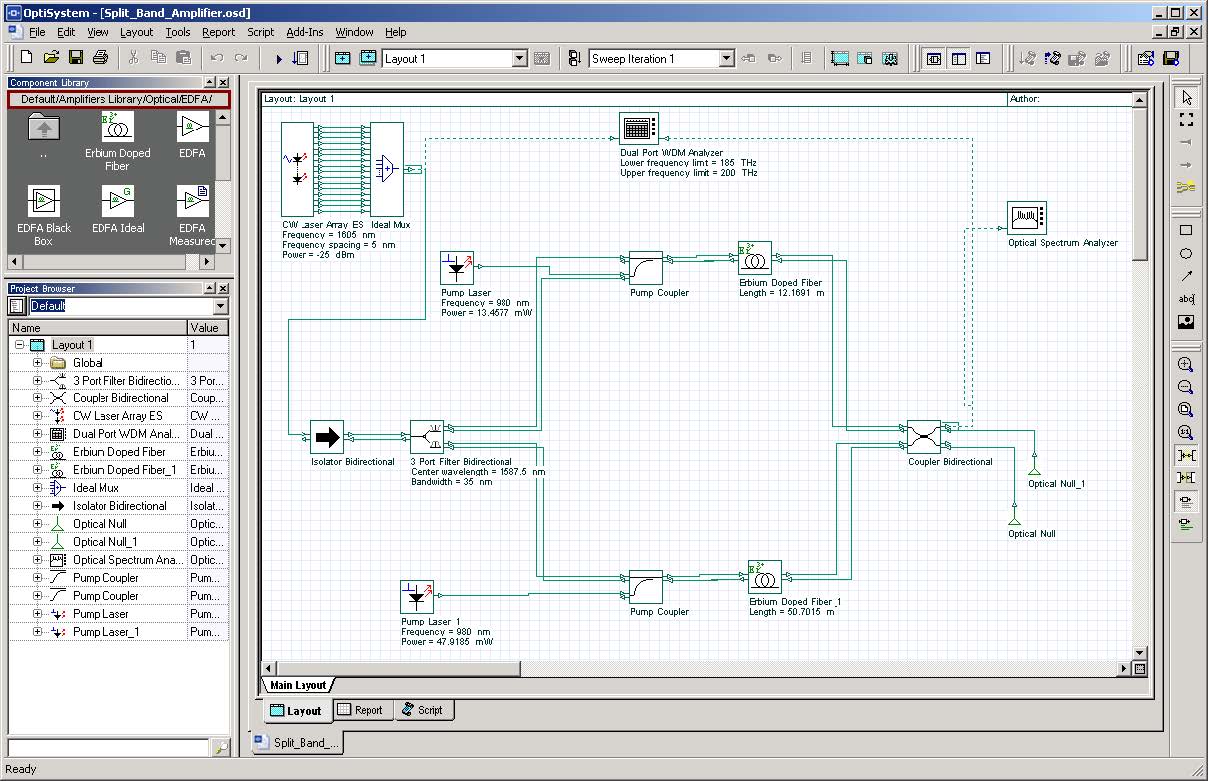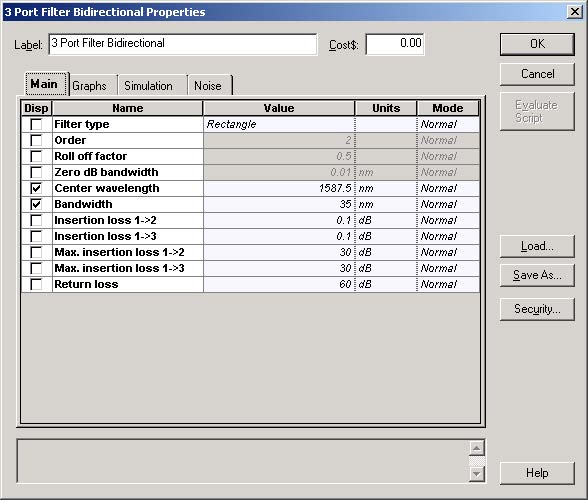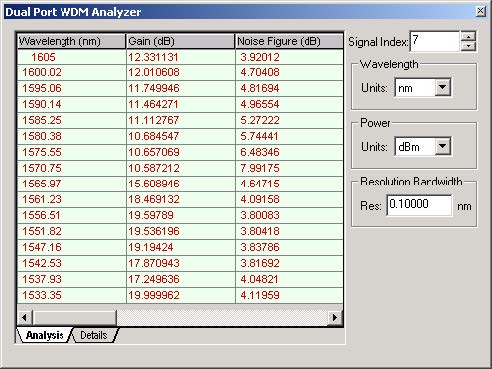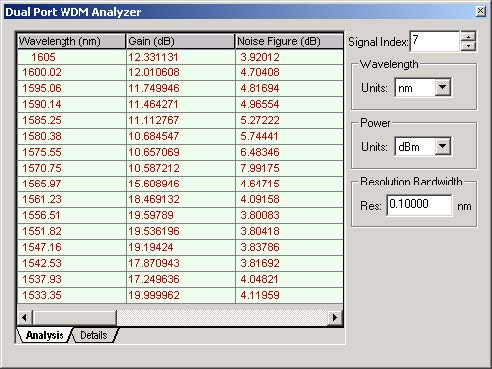The gain peak shifts to longer wavelengths as the fiber length increases and the population inversion decreases.
The bandwidth of an EDFA can be increased by separating the gain spectrum into two bands, 1530-1560 nm and 1570-1610 nm, with a band-splitting filter. The gain can then be optimized in the two regions separately.
Loading the project
- Go to the OptiSystem sample files folder, “…Optiwave Software\OptiSystem 9\Samples\Optical amplifiers”.
- Open the Project “s Amplifier.osd”.
Figure 1 displays the project.
The first path was optimized to work in the 1530-1565 nm region, and the second path was optimized to work in the 1570-1605 nm region.
Figure 1: Project “Split Band Amplifier.osd”
The 3 Port Filter component splits the signal in the two paths.
In Figure 2, the 3 Port filter properties dialog boxes has the center wavelength at 1587.5 nm and 35 nm of bandwidth. The first port will have the rectangular transfer function and the second will have the complementary transfer function.
Figure 2: Filter component parameters
Running the simulation
- To run the simulation, you can go to the File menu and select Calculate. You can also press Control+F5 or use the calculate button in the toolbar. After you select Calculate, the calculation dialog box should appear.
Viewing results
- Double click on the visualizers (Dual Port WDM Analyzer and Optical Spectrum Analyzer).
- Increase signal index parameter to 7 (max value).
Figure 3 displays the WDM Analyzer showing the Gain.
Note that the gain is approximately 20 dB (1530-1575nm) for the first path, and 11 dB (1580-1605nm) for the second path.
The signal can be followed with the OSA tool to verify how the signal is changing along the amplifier.
Figure 4 shows the signal at the coupler output port.
Figure 3: WDM Analyzer
Figure 4: Signal spectrum at the coupler output





